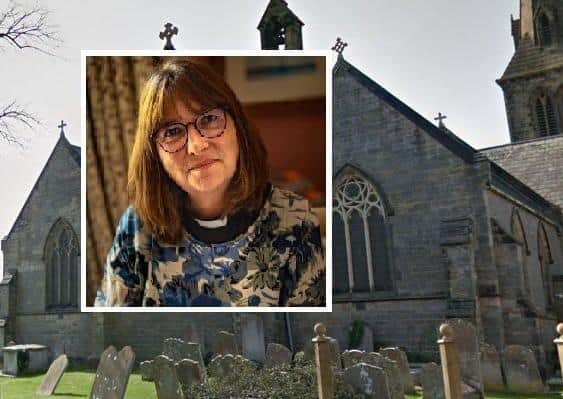Conservation society’s bid to save pews at Hurstpierpoint church is rejected
and live on Freeview channel 276
The Rev Jane Willis and churchwardens, George Baxter and Robert Price at Holy Trinity Church had applied to the Church of England Consistory Court, for consent to remove the traditional church pews from the church and replace them with chairs to make for more flexible use of the church and more comfort for users.
However, the Victorian Society argued that loss of the pews from the church would seriously damage the historic church.
Advertisement
Hide AdAdvertisement
Hide AdThe church in High Street, Hurstpierpoint, dates from 1845, and was designed by famous ecclesiastical architect, Sir Charles Barry, to replace a medieval church which had stood on the same site.


The society said that the church had ‘significant architectural interest’ because it was the last one designed by Barry.
Another influential society, Historic England also expressed ‘real concerns’ about removal of the pews which it said could ‘result in undue harm’ to the building.
However, in their argument in favour of the changes the rector and churchwardens argued that the pews were uncomfortable, particularly for elderly people, that they did not allow flexibility suitable for young families, were not as effective as chairs for social distancing, and that plans for a new regular Sunday service for people of all ages, would best be delivered in the body of a church ‘freed from the rigidity of fixed uncomfortable pews’.
Advertisement
Hide AdAdvertisement
Hide AdComing down in favour of removal of the pews Mark Hill QC, chancellor of the Diocese of Chichester in his role as a judge of the Consistory Court said there was a ‘heavy presumption against change where listed buildings were concerned’.


However, granting consent for the changes he continued: “I am driven to the conclusion that in this instance the petitioners have persuaded me on cogent and compelling evidence that the justification for the proposed works outweighs the harm that will result from their implementation.”
The Rev Jane Willis sahd the church team were delighted at the chancellor’s decision, which has come at the end of a long process of consultation.
She added: “The Victorian Society play an important role in caring for our heritage, and our wonderful church building is much loved and valued by our congregation and community.
Advertisement
Hide AdAdvertisement
Hide Ad“Just as we adapt our houses in order to live in them, so the use of our church buildings is continually evolving to meet the needs of the day.


“In these challenging times we are experiencing new life as a church – increased flexibility and accessibility will enable us to serve our local community more fully, to welcome more people in through our doors, and to fulfil the task entrusted to us which is to proclaim afresh in each generation the unconditional love of God.”